Thread-lift: The anti-ageing panacea
There has been considerable progress in anti-ageing treatments in recent years, more specifically in the minimally invasive category. Thread lift as a ‘weekend facelift’ procedure is catching up. Experts consider it a better alternative for Indians as we tend to have heavier faces. Kanishka Ramchandani explores thread lift as a facial rejuvenation treatment and the new-age options in threads.
Kanishka Ramchandani
Facial rejuvenation is no longer a ‘one-treatment-suits-all’ formula it once was. Today, the concept of facial rejuvenation comes with a deeper understanding of what the patient wants and which is the best way to achieve the desired results. However, the best way is actually a combination of a number of ways. Anti-ageing or corrective facial treatments involve a combination of two or three important procedures and thread lift is becoming a prominent option in this mix. Understanding the patient and selecting the right thread for this procedure is the key for any aesthetic practitioner.
In this feature, Aesthetic Medicine in collaboration with Skinnovation, looks at the factors that affect the choice of threads for a facial rejuvenation treatment.
The quest for youthfulness
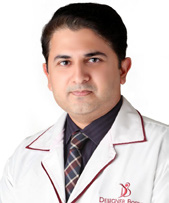
Dr Parag Telang
According to Dr Parag Telang, Founder and Director, Designer Bodyz Centre for Advanced Cosmetic Surgery, Mumbai, “The search for tightening or lifting the face has been on since a century. There are surgical and nonsurgical options for face and neck lifting. Threads made from various materials have been the mainstay of non-surgical face or neck lifting. The addition of COGS has added a new dimension to thread-lifting. Previously, the only option available for face and neck tightening was surgery. With the current newer generation of COG threads, we have the ability to elevate and suspend facial tissues to a higher location, and thereby rejuvenate the face or neck. There are different threads for each facial zone such as eyebrows, mid face and lower face. Depending upon the patient’s requirement, we can offer customised treatment plans for each individual face. The method of insertion is also different for each indication, whether we want to simply lift or volumise the face as well.”
Thread lifts are specialised treatments that need skilled aesthetic surgeons for their execution. After marking the patient’s face with contours, a small incision is made in the hairline and a thick, hollow needle with the special barbed thread is inserted into the facial skin. The tunneling technique is used to push the thread subcutaneously. Thereafter the barbs attach themselves onto the fleshy areas of the face and tighten the face as the thread pulls them closer. The pull of the thread lifts up the face, thereby smoothening the lines. As natural collagen builds around the barbs embedded in the flesh, the face starts looking younger and more refreshed. With thread lift, you can achieve a noticeable and long lasting facelift without any visible scars.
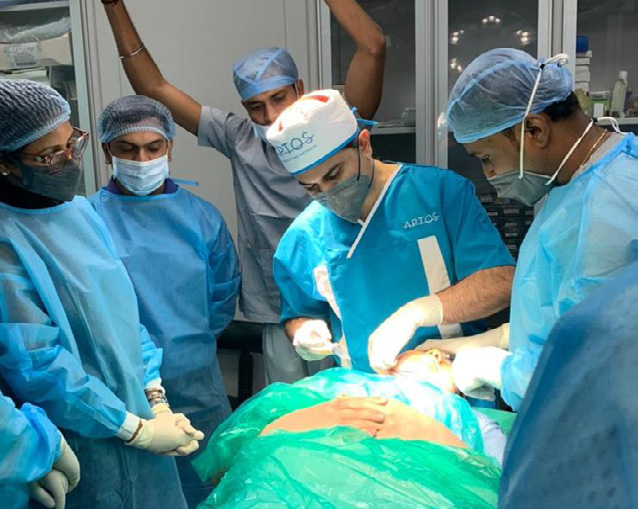
Picture by Dr Parag Telang
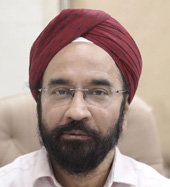
Dr Harvinder Singh Marwah
Dr Harvinder Singh Marwah, Founder of Dr Marwah’s Skin, Hair, Laser & Cosmetic Centre, Mumbai, elaborates, “The most basic type of threads used for facial rejuvenation are mono threads, which are used to stretch the skin such as in the under eye area. Then there are lifting threads or COG threads, which can be PDO or PLA, and spring threads. These threads come in different sizes depending on the area for which they are used.”
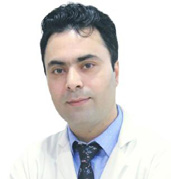
Dr Syed Nazim
Speaking about the role of threads in facial rejuvenation, Dr Syed Nazim Hussain, Consultant Dermatologist, Royal Lush Clinic and Max Hospital, Gurgaon, says, “Now the trend is moving towards non-surgical facial rejuvenation. However, there are limitations in that. We may not get results similar to surgical facelifts. That is where minimally invasive procedures come into the picture and in that we have thread lift. Earlier we had PDO threads but now we have more options with companies like APTOS coming to India with innovative products.”
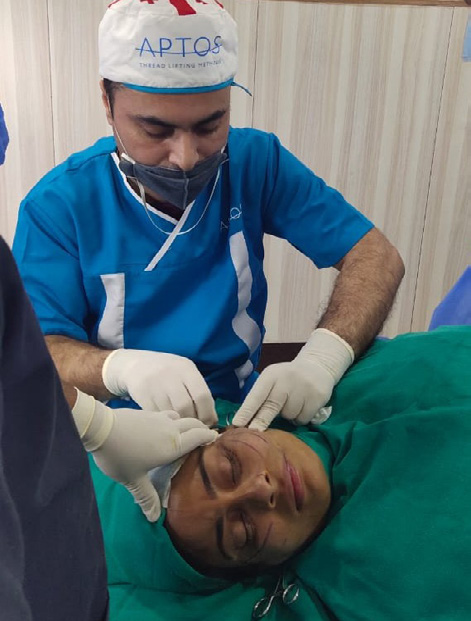
Picture by Dr Syed Nazim
Dr Syed further explains that threads are used to treat facial sagging and target the laugh lines, marionette lines, lifting the jawline and wrinkles around the neck as well as correcting the nose. However, there are different kinds of facial sagging and the practitioner needs to understand this before deciding upon threads as a treatment. Severe hanging of the jowls cannot be treated with a thread lift and requires surgery.
New-age threads
“As we age, the hyaluronic acid (HA) content of our skin keeps reducing. Addition of HA to the threads promotes skin rejuvenation. These HA enriched APTOS threads is a revolution in thread lift procedure. These are good for those who have pigmentation or freckles or static lines on the face or on under eye areas. Use of Polylactic Acid and Caprolactone (PLA/CL) makes these COG threads safer than polypropylene since it dissolves over 12-18 months after having caused tissue adherence at the new location,” explains Dr Telang.
Dr Syed says, “A lot also depends on the area to be treated and on the choice of threads such as barbed threads. Today, we have the option of PLA/CL threads with HA, by APTOS, which offers skin rejuvenation along with the facelift. Moreover, the APTOS thread is a well-regulated, training driven product. The downtime experienced by the patient depends upon the kind of thread used and the indication it is correcting. As the thread is inserted in the fat layer of the skin, we expect some swelling or slight bruising. So, it can be said that there is a downtime of a day. In a full facial thread lift, the swelling could last for 45 hours.

Dr Gurjot Marwah
Dr Gurjot Marwah, Dermatology, Venerology and Leprosy Surgeon, Dr Marwah’s Clinic, Mumbai, further elaborates, “The most basic type of threads used for facial rejuvenation are mono threads, which are used to stretch the skin such as in the under eye area. Then there are lifting threads or COG threads, which can be PDO, PLA, P(LA/CL), and spring threads. These threads come in different sizes depending on the area for which they are used.”
With regards to the preference for PLA threads, Dr Marwah points out that studies have indicated that as compared to PDO threads, PLA threads have lesser likelihood of an allergic reaction. P(LA/CL) with HA threads are long lasting with lesser effect of trauma and with a glow on the skin.
Dr Syed adds that the PLA/CL threads with HA can be used to treat any facial zone but the type of thread used for different areas on the face differ accordingly. APTOS threads are available with Visage method, Nano method, Light Lift method etc. The difference depends on the length of the thread, its gauge or diameter, whether the thread is with barbs or without barbs or unidirectional or bidirectional barbs. The methods of inserting the thread also differs - sometimes it is done with a cannula, sometimes with the needle.
Right candidates
Dr Telang states, “Any patient in their ’30s or ’40s with early signs of ageing can opt for thread lifting. It is done under local anesthesia and typically takes 30-45 minutes. So it is truly a lunch-time lift. It does cause a feeling of tightness or pulling in the treated areas for a few days. It is important for patients to stop any blood thinners that may cause bleeding during the insertion of threads. Someone with high blood pressure needs to keep their BP under control before this procedure. It is not a procedure for those above 55-60 years of age, in which case a surgical facelift may be recommended.”
According to Dr Syed, the perfect candidate for threads is someone who has started developing jowls or nasolabial folds and wants smoother contours or someone who wants a brow lift. Double chin and wrinkling around the neck can also be taken care of with threads. He says, “Apart from patients who are on blood thinners, in which case they will be asked to stop taking such medication for a week, pregnant and lactating mothers are not allowed to do thread lift procedures.”
Dr Gurjot explains, “While fillers are also an option for facial rejuvenation, they add volume to the face, which is counterproductive to people with heavy faces like most Indians. So for Indians, threads are an excellent option for lifting. With new APTOS threads with HA coming in, it works better as HA is a known antiinflammatory agent and a collagen stimulator. With threads you can lift the face but you won’t be able to do much by way of contouring.”
He would recommend threads to a patient with a bulky face looking for a non-surgical facelift as opposed to someone with a slimmer face. “I personally prefer the APTOS threads as they are much smoother than others and the procedure is much easier. Due to the HA present in threads, the recovery is also fast. So the downtime is less and the results are longer lasting.”
As part of the post-treatment care, Dr Syed suggests avoiding manipulating the face, sleeping in a supine position and avoiding make-up. The threads get metabolised over a period of two years after doing their job. Removal of the thread is performed in case of some complication or infection has occurred, or if due to technical inefficiency, the thread is very superficially inserted.
While threads might well be the future of non-surgical facelifts for aesthetic practitioners in India today, Dr Marwah adds a final word of caution, “As a doctor, you have to take into account chemical reactions and allergies before deciding upon threads for facelift. However, it is equally important to look at the psychology of the patient. Avoid treating a patient who has borderline dysmorphia.”
Practitioners’ checklist
Dr Parag Telang suggests, “It is important to learn the principles and indications of thread lifting. It is mandatory to learn the different techniques of thread lifting and the correct patient selection to give better results. Start with simpler areas and smaller threads. Once you become comfortable with the use of threads then you can start treating complex areas. Always follow proper aseptic precautions during this procedure.”
Indications for APTOS threads
• FaceLift: Complete face tissue lifting/ contouring can be achieved with combination of different thread methods.
• Eyebrowlift: Hooded eyebrows can be lifted with threads. Botulinum toxin can help, too, but threads will give better results.
• Nasolabialfolds: You can pull from the cheekbones and smooth out the nasolabial lines
• Marionettelines: Threads work well on the lines that run from the angle of the mouth to the jawline.
• Jowllift: Threads help in lifting the sagging jowl area.
• Nosecorrection: You can correct a deviated nose and align it better with threads.
• Deepfolds: Spring threads can be used to correct deep folds and lines on the neck.